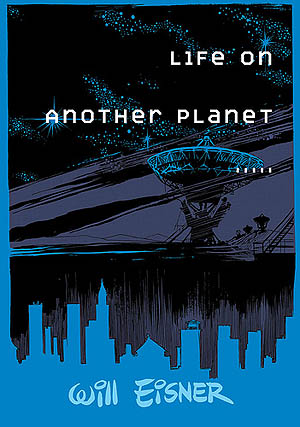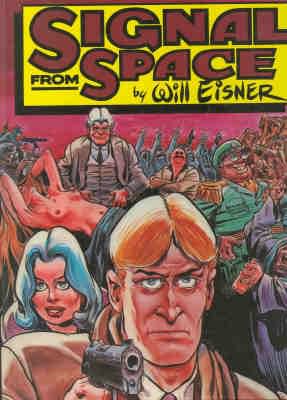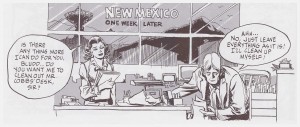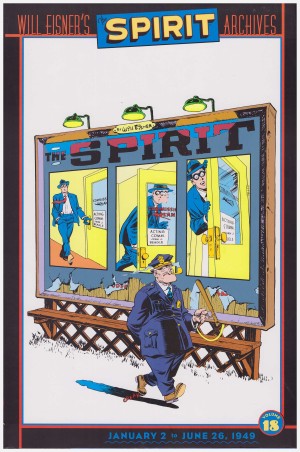Review by Frank Plowright
Although written in the latter days of Cold War politics, most of the political and social scenarios that play out here are eminently likely today.
The madness begins when the night shift at an Arizona astronomical observatory note an anomaly in the signals they’re receiving from space. A thrice repeated sequence of prime numbers is the spark for dozens of deaths and a major political shift. The person the astronomers ask to plot the source of the signal identifies a planet named Barnard, but he’s also a Soviet spy and informs his own people of the discovery. Shortly afterwards astrophysicist Jim Bludd becomes involved, and the experience takes him to places he never dreamed he’d be, both physically and metaphorically.
In his later work Bludd was the nearest Eisner came to reviving his 1940s hero the Spirit. Bludd has a similar skill set, adaptable, tough and resourceful, while there’s a case to be made for the female lead Nadia resembling Sand Serif. She’s similarly resourceful, yet also conflicted. It’s as if Eisner toyed with the idea, then discarded it.
A criticism levelled against the graphic novels of Will Eisner is that they’re overly sentimental, but that’s not a streak on display here. As Eisner continues his extrapolation of how humanity would respond to a signal from space, his viewpoint becomes decidedly bleak, particularly where the authorities, science and global markets are concerned. That caricatures of Idi Amin and Richard Nixon both take significant roles is a fair indication of the spiralling circumstances, and the caricatures are the sole humorous elements throughout.
Titled A Signal from Space when first serialised and then issued as a collection in 1983, Eisner re-titled the work for Kitchen Sink’s 1995 re-issue. This was Eisner’s first true graphic novel, its predecessor A Contract with God being four novellas. Here he stretches himself across 125 pages with a continued narrative. His research into then cutting edge science still plays true today, as what was then the topic of research papers has graduated into common scientific currency, although some liberties are taken for a better story. The planet Barnard, though, has in the past decade been declared definitively devoid of life.
Eisner’s artwork isn’t as spectacular now as it was in 1979, as many have observed and many have filched, but taking a step back and realising this graphic experimentation occurred when few American comics deviated from a six panel grid should evoke some wonder. And for all the chances taken with layouts, Eisner’s primary purpose of storytelling never diverts from clarity.
This was a brave step into the unknown, but a downbeat study of humanity, and while the bigger picture is certainly credible, there are too many smaller moments that don’t ring true; characters who change with the needs of the plot, one spectacularly out of place science-fiction element, and a possibly far too generous estimation of how the United States might initially react. This remains a page-turner that drags the reader along, but Eisner would rapidly produce far superior work.







